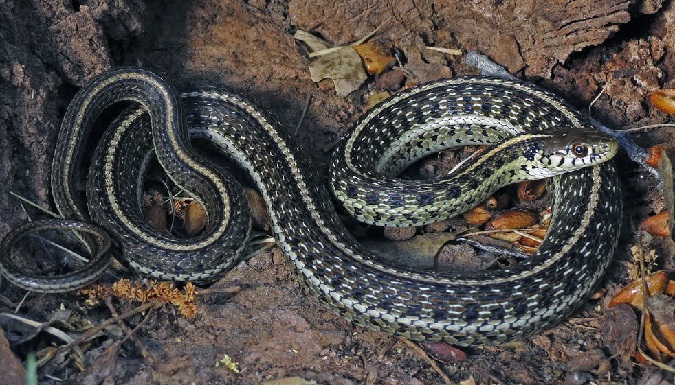After a one hundred-year absence, the threatened northern Mexican gartersnake has been rediscovered on the Colorado River. It may well-be the habitat improvements accomplished by the Lower Colorado River Multi-Species Conservation Program (LCR-MSCP) that have resulted in the return of the snake. It was the Program’s contracted biologists that rediscovered the snake in its historical range in 2015.

Beal Lake, location of the discovery, is on the Havasu National Wildlife Refuge along the Colorado River. The lake, managed by the U.S. Fish and Wildlife Service, is a vital marsh habitat that contributes to the conservation goals of the LCR-MSCP – a river restoration partnership between agencies, water and electricity providers, conservation organizations and tribes.
The LCR-MSCP is a long-term program created in 2005 to minimize and mitigate impacts that water delivery and power generation along the lower Colorado River may have on 26 fish and wildlife species, including six species protected under the Endangered Species Act (ESA). LCR-MSCP is responsible for creating, replacing, and managing habitat for these species and operates under an ESA permit.
However, in the early 2000s, when the LCR-MSCP was conceived, the largely aquatic, northern Mexican gartersnake was long-thought to have been extirpated from the lower Colorado River floodplain and it was not included the wildlife to be aided by the LCR-MSCP. In 2014, the subspecies was added to the list of threatened animals protected under the ESA.
The U.S. Fish and Wildlife Service, along with the Bureau of Reclamation, are seeking to add the northern Mexican gartersnake as a species covered under the LCR-MSCP and its ESA permit. Formally including the subspecies in the program’s plan will aid the LCR-MSCP in continuing to manage habitat to accommodate the snake’s return to its historical range while providing the program with ESA compliance.
The agencies are inviting public comment on a draft environmental assessment that evaluates the impacts of, and alternatives to, amending the LCR-MSCP’s existing ESA permit. Relevant documents are available at: https://www.fws.gov/southwest/es/arizona/ or by request from the Field Supervisor, Arizona Ecological Services Field Office, 9828 N. 31st Avenue #C3, Phoenix, AZ 85051; or by phone at 602–242–0210. Comments must be submitted to the Service at the above address or by email to: incomingazcorr@fws.gov no later than December 28, 2017.
The mission of the U.S. Fish and Wildlife Service is working with others to conserve, protect and enhance fish, wildlife, plants and their habitats for the continuing benefit of the American people. We are both a leader and trusted partner in fish and wildlife conservation, known for our scientific excellence, stewardship of lands and natural resources, dedicated professionals and commitment to public service. For more information on our work and the people who make it happen, visit www.fws.gov.
-FWS-
Note to editors: Photo support is available by contacting Jeff Humphrey at 602-242-0210 (jeff_humphrey@fws.gov) or visiting http://www.fws.gov/southwest/es/arizona/Reptiles.htm .
Northern Mexican gartersnake photo. Credit: Jeff Servoss [Here]
